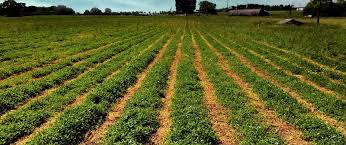Explore our blog featuring articles about farming and irrigation tips and tricks!
Grazing Cover Crops

By: Dale Younker
Adding livestock into an annual cropping system and grazing cover crops that are planted between cash crops is one way to potentially increase profit to a farm enterprise. If done correctly it can also improve soil health.
The manure and urine left after the livestock graze a cover crop helps speed up the nutrient cycling because the forage has already been processed once. This waste also helps feed the soil microbes which contribute to building stable soil aggregates. Better soil aggregation means more pores spaces in the soil which increases water infiltration and water holding capacity. As the microbes die they add organic matter to the soil which also increases water holding capacity and releases additional nutrients to subsequent crops.
Based on university research in western Kansas cover crop forage production is highly variable and dependent on the weather conditions from year to year. Dry matter amounts can range from over 3,000 pounds in favorable years to less than 1,500 pounds in unfavorable years. Because of this there needs to be a lot of flexibility in the grazing system and alternative forage sources need to be available if the cover crop field does not yield as expected or fails completely. To maintain adequate soil cover and provide a carbon food source for the soil microbes only about 25 to 40 percent of the total forage should be eaten by the livestock.
Stay up to date on all T-L news and get alerts on special pricing!


